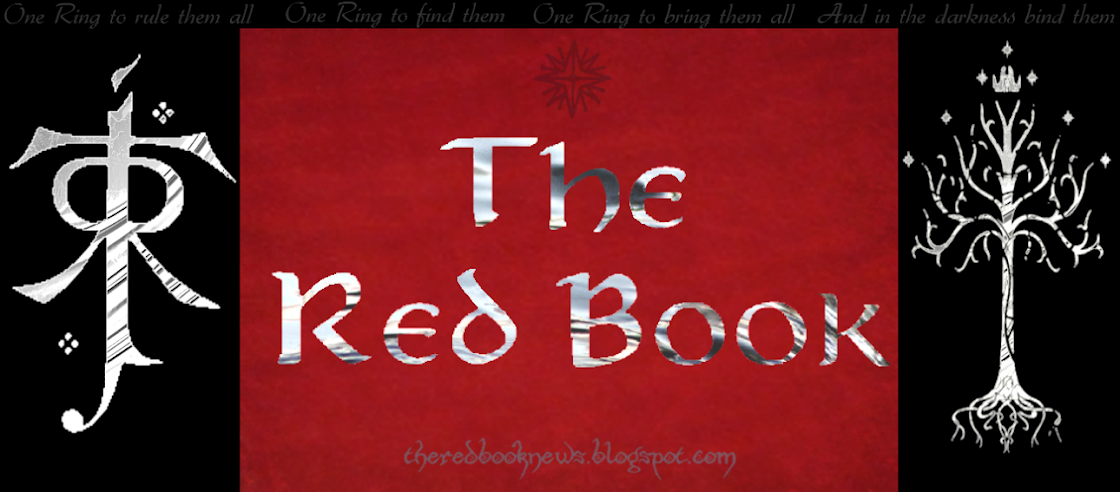When you are behind on a post about the contents of a book, why not talk about its cover?
While there are many gorgeous copies of The Lord of the Rings and The Hobbit, book-buying Tolkien fans have found a lack of beautiful copies of the Silmarillion. One's that are readily available, anyway. The problem is that most of the really pretty ones, are the earlier editions, and are now harder to come by.
We have all see the ugly brown one, the little silver paperback, and this latest black and blue edition, which is quite nice.
But they don't really come close to the 50th anniversary LOTR, or the collector's edition. Perhaps it is just me who dislikes these covers, but there you have it. So naturally, I went on a search for the Silmarillion of my dreams.
I own the silver paperback, for annotating and re-reading, and carrying places, and generally beating up. But I needed something pretty. Something that I could read at home, and pet, and display, and enjoy looking at. I love beautiful books. Skip to the end of the post to see the one I ended up buying.
Turns out, there are actually several beautiful copies of the Silmarillion, they just aren't widely marketed. Some may require you to pay with your firstborn child, and if they are signed, will likely require your soul as well.
| 1977 |
| Collectors Edition, 1982 |
This blue 1997 edition was published in Canada, I believe, and may actually be impossible to purchase.
Now we have the 1982 collector's edition, which is red and gold, and comes with a matching slipcase, much like the LOTR one. It is probably my favourite one. So pretty. This image doesn't do it justice. It was a limited edition, and whoever owns all of them seems unwilling to sell. BUT, if you have about $5,000 on hand, you can have on that is signed by Christopher Tolkien himself (For Sale on AbeBooks). But hey, at least it has free shipping.
| 1995 |
| 2004 |
Next up is a lovely 1995 edition, which is similar to the Alan Lee illustrated copies of LOTR. It's hardcover, with dust jacket, and I believe that the cover art is by John Howe. There are a couple other version of this edition, the only difference being that the gold on the top and bottom is a different colour. The good news is, you can actually buy one of these. I found a couple that were not too expensive. (Lower Price - Medium Price - Higher Price)
This next is another favourite of mine. Released in 2004, hardcover, and illustrated by the talented Ted Nasmith. Readily available on Amazon.
| 1977 - 1998 |
| Easton Press |
This beautiful 1977 - 1998 edition with the rose window thing in the front, is fairly easy to come by. If you just look on amazon or something, it will cost around 2,000 dollars, but some deeper searching on more obscure used book sites, will provide you with copies anywhere from $3 to $50.
The leatherbound, Easton Press edition is also well known, and very easy to come buy, so long as you have $100 - $300 on hand. There was a time where I had my eye on a $120 copy, and it is a good thing it went up before I could be an idiot and spend that much money on it. Also a good thing, because now I have one that I like much more.
This brings me to the fairest in the land (not including the collector's edition) and a very affordable copy. Prices range from $10 - $30 which is pretty standard for a nice hardcover. Once you know what to look for, they are really easy to find. The thing to know is that there are multiple 1999 editions, and you are going to have to search a bit. Don't be discouraged if it doesn't pop up right away. The artwork is Tolkien's own (you may recognize it from a book ABOUT middle-earth artwork). It is a hardcover, but the art is only on the dust jacket. The book is rather boring under the dust jacket, but I think it's nice. Black with silver lettering. Not too shabby.
Mine was $13 and I think I went through at least 20 pages of search results on Amazon before finding it, so I shall save you the trouble:

I hope you found this useful (or at least amusing) in your search for the perfect copy of Silmarillion. If you are looking for the older ones, I would recommend places like Ebay, AbeBooks, and ThriftBooks. You can find some of these on Amazon, but it is more oriented towards newer books. You will have more at stores that are mainly for secondhand things. I don't think it is hard to find nice copies of any of Tolkien's other books, but let me know if you want a post on my favourite editions of other things.
All the images in this post belong to the publishers of the books.



